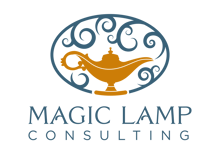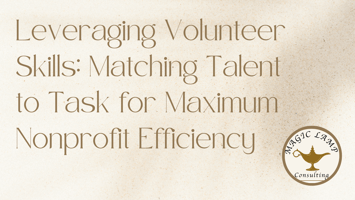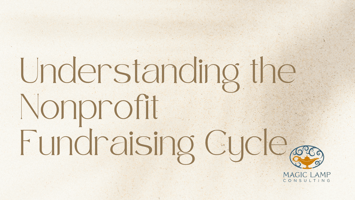6 Ways Nonprofits Can Enhance Access for Greater Community Impact

Nonprofits play a unique role, knitting the fabric of support, advocacy, and education across communities. Yet, the impact of a nonprofit is deeply intertwined with its accessibility to those it aims to serve. Enhancing access is not merely about expanding reach; it's about deepening connections and fostering inclusivity, ensuring the services and resources provided resonate with and are attainable by the broadest audience possible. For nonprofit leaders striving to magnify their impact, exploring innovative ways to enhance access is pivotal. With you in mind, the Magic Lamp Consulting team has put together some actionable strategies to help guide this journey toward greater community impact.
- Leverage Technology for Wider Reach
In our digitally driven age, technology stands as a powerful equalizer in amplifying access. Nonprofits can harness digital tools to break geographical and logistical barriers, making their services more available to those in need. From developing user-friendly websites and mobile apps that provide easy access to resources and services, to utilizing social media platforms for broader engagement, technology can significantly widen a nonprofit's reach. Additionally, embracing virtual events and webinars allows for the dissemination of information and knowledge to a global audience, making geographical limitations obsolete.
- Cultivate Community Partnerships
Building strategic partnerships with other organizations, businesses, and local governments can exponentially increase the accessibility of services. These alliances can provide complementary resources, share expertise, and cross-refer clients, ensuring a more holistic support system is available to the community. Collaborations can also extend to co-hosting events, joint fundraising, and shared advocacy campaigns, amplifying impact through united efforts.
- Ensure Inclusivity in Programming
Access is inherently tied to inclusivity — a program that is not designed with a diverse audience in mind is inherently limited in its reach. Nonprofits should strive to create programs that are welcoming and accessible to all, regardless of race, gender, age, disability, or socioeconomic status. This can involve offering materials in multiple languages, ensuring venues and digital platforms are accessible to people with disabilities, and designing programs that are culturally sensitive and responsive to the needs of different community segments.
- Foster a Culture of Feedback and Adaptation
For nonprofits to truly enhance access, they must listen to the communities they serve and be willing to adapt based on feedback. Engaging community members in dialogue, conducting surveys, and holding focus groups are effective ways to gather insights into the barriers people face in accessing services. This feedback should not only be welcomed but actively sought out, with the organization showing readiness to pivot strategies and programs in response to community needs and preferences.
- Invest in Capacity Building
Enhancing access often requires nonprofits to expand their capabilities, whether through technology, staffing, or infrastructure. Investing in capacity building — from training staff and volunteers in cultural competency and accessibility standards to upgrading technological tools and facilities — is crucial. Additionally, securing funding and resources dedicated to expanding access can empower nonprofits to implement the necessary changes and innovations to reach and serve a wider audience effectively.
- Advocate for Policy Change
Sometimes, the barriers to access are structural, rooted in policies and regulations that inadvertently limit the availability of services. Nonprofits can play a pivotal role in advocating for policy changes that improve community access to support and resources. By engaging in advocacy, nonprofits can address systemic barriers, influencing the creation of more inclusive, equitable policies that enable greater community impact.




